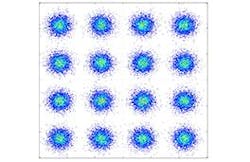ORC researchers modulate laser diodes in new way for leading-edge fiber-optic communications
By using a new technique to directly modulate telecommunications-type laser diodes at high speeds with exquisite control of the optical field, researchers from the Optoelectronics Research Centre at the University of Southampton (ORC; Southampton, England), Alcatel-Lucent Bell Labs (Holmdel, NJ), and Eblana Photonics (Dublin, Ireland) are eliminating the need for bulky, expensive, and inefficient external optical modulators for highly advanced modulation formats in fiber-optic communications.1
Currently, external electro-optic modulators must be used for next-generation on-off-keyed 10 Gbit/s systems. In addition, up-and-coming modulation schemes such as 100 Gbit/s coherent systems, which use quadrature amplitude modulation (QAM) or other very complex modulation formats, cannot rely on conventional direct-current-modulated laser-diode schemes.
The researchers optically injection-lock directly modulated laser diodes to allow the very complex in-phase-quadrature (IQ) modulation necessary to, for example, create a 16-level QAM signal.
The technique was demonstrated over a 230 km fiber link with 75 km of standard single-mode fiber in the first and third spans and 80 km of large-effective-area fiber in the second span. The technology is patented by the University of Southampton and licensed to Eblana Photonics.
"The new capability we have demonstrated will be of relevance and could be of significant impact within many scientific and engineering communities that are directly concerned with or exploit laser radiation," says Radin Slavik, a Principal Research Fellow at the ORC.
One potential use of this technology is for coherent combination of high-power lasers.
Source: http://www.southampton.ac.uk/mediacentre/features/radan_slavik_research.shtml
REFERENCE:
1. Zhixin Liu et al., Nature Communications (2014); doi: 10.1038/ncomms6911

John Wallace | Senior Technical Editor (1998-2022)
John Wallace was with Laser Focus World for nearly 25 years, retiring in late June 2022. He obtained a bachelor's degree in mechanical engineering and physics at Rutgers University and a master's in optical engineering at the University of Rochester. Before becoming an editor, John worked as an engineer at RCA, Exxon, Eastman Kodak, and GCA Corporation.
